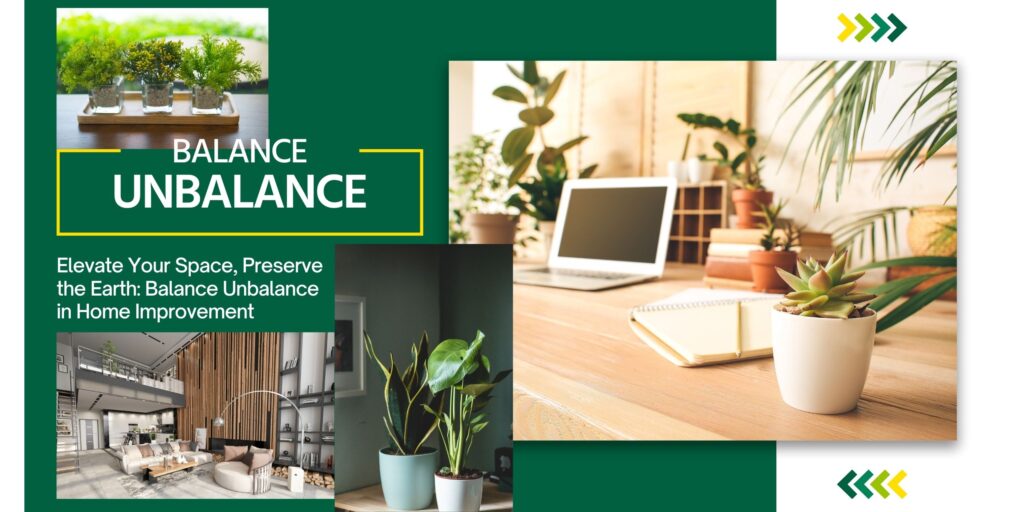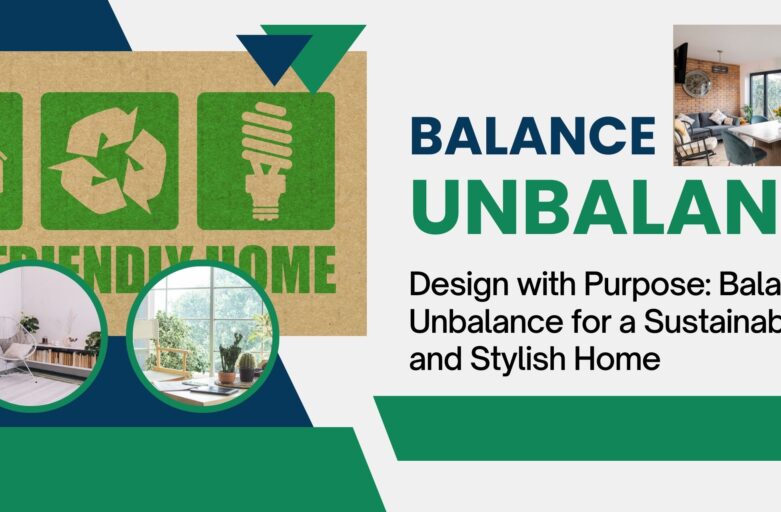The importance of eco-friendly lifestyles has never been higher than it is now. Homeowners and interior designers are looking for creative ways to include eco-friendly solutions into home remodeling projects as climate change and environmental issues rise to the forefront of global dialogues. Balance Unbalance is a novel strategy that successfully brings together fashion and environmental consciousness. Through the lens of Balance Unbalance, this article delves into the finer points of eco-friendly home improvement, providing useful information and ideas for your next remodel.
The Imbalanced Idea of Balance
Balance A sustainable future can be achieved by the application of a strategy known as “unbalance,” which works to balance environmental, economic, and social issues. In the context of house renovation, this implies prioritizing environmental and energy considerations without compromising on aesthetics or quality of life. Sustainable materials, energy-saving technologies, and considerate design decisions allow homeowners to create a home that is both aesthetically pleasing and environmentally friendly.

Sustainable Resources
The use of sustainable resources is central to the Balance Unbalance approach to remodeling a home. A homeowner’s carbon footprint can be greatly diminished by using only environmentally friendly products sourced in a responsible manner. There are several popular eco-friendly materials to choose from for house renovations, such as:
– Bamboo is a renewable resource that can be used as a substitute for hardwood in many applications, including flooring, cabinetry, and countertops.
– Metals such as aluminum and steel can be recycled, and their use can minimize landfill trash and the amount of energy needed to create new products.
– Cork: Cork is a great option for flooring, wall coverings, and insulation because it is renewable and biodegradable.
– Reclaimed wood is wood that has been rescued from an existing construction and reused for something else, such as flooring, beams, or furniture.
Technologies that Save Energy
Balance Unbalance also involves the incorporation of energy-efficient technologies into existing buildings. In addition to lowering energy usage and GHG emissions, these solutions also help homes save money on their monthly utility costs. When planning a home makeover, you may want to think about installing energy-saving features such as:
– In order to reduce your home’s reliance on fossil fuels and your monthly energy costs, you may want to consider installing solar panels on your roof.
– Appliances with low energy consumption: Choose Energy Star-labeled appliances since they consume less power and water than their non-Star counterparts.
– Lighting with light-emitting diodes (LEDs): Compared to conventional incandescent bulbs, LEDs use far less energy and last significantly longer.
– The use of a smart thermostat can help you save money and energy by learning your preferences and adjusting the temperature in your home accordingly.
Methods of Sustainable Design
Balance Unbalance places a premium on using sustainable design practices without sacrificing beauty or utility. If you want to make your home more environmentally friendly, consider these design suggestions:
– Choose layouts with plentiful windows and doors to maximize natural light and air flow and minimize the use of artificial lighting and climate control systems.
– Put in big windows so that natural light can fill the room, eliminating the need for artificial lighting and making the home more cost-effective to run.
– Native plant landscaping: Go with local flora instead of exotics if you want a garden that thrives with less attention and water.
– Make use of light hues: rooms with light-colored walls and surfaces use less artificial lighting and use less energy overall.

Including Natural Elements
The incorporation of natural elements into our indoor environments is a core tenet of the Balance Unbalance design philosophy. Biophilic design, which seeks to forge links between buildings and the natural environment to improve human health and well-being, offers one solution. Some suggestions for bringing the outside in:
– Houseplants not only liven up an indoor environment, but they also help clean the air and put people at ease. Try your hand at plant care with easy-care houseplants like the pothos, snake plant, or spider plant.
– Use light window treatments and avoid blocking windows to maximize the amount of natural light that enters your home.
– Aquatic elements: Relax and unwind in the tranquility created by a tiny interior water feature, such as a tabletop fountain or aquarium.
– Wood, stone, and organic fibers in textiles are just a few examples of natural materials that can be used to bring the indoors closer to the outdoors.
Conclusion
Finding a happy medium between aesthetics, utility, and environmental friendliness is the goal of any eco-friendly house renovation. Balance Unbalance encourages people to design their homes in a way that is both aesthetically pleasing and ecologically sound. You can make your home beautiful while also being good to the earth by using eco-friendly materials, installing energy-efficient equipment, and using design principles that promote sustainability. If you want to feel more at one with your home and the natural world, it’s important to remember to bring nature inside. Using the notion of Balance Unbalance as a touchstone, you can make significant and satisfying changes to your home.
